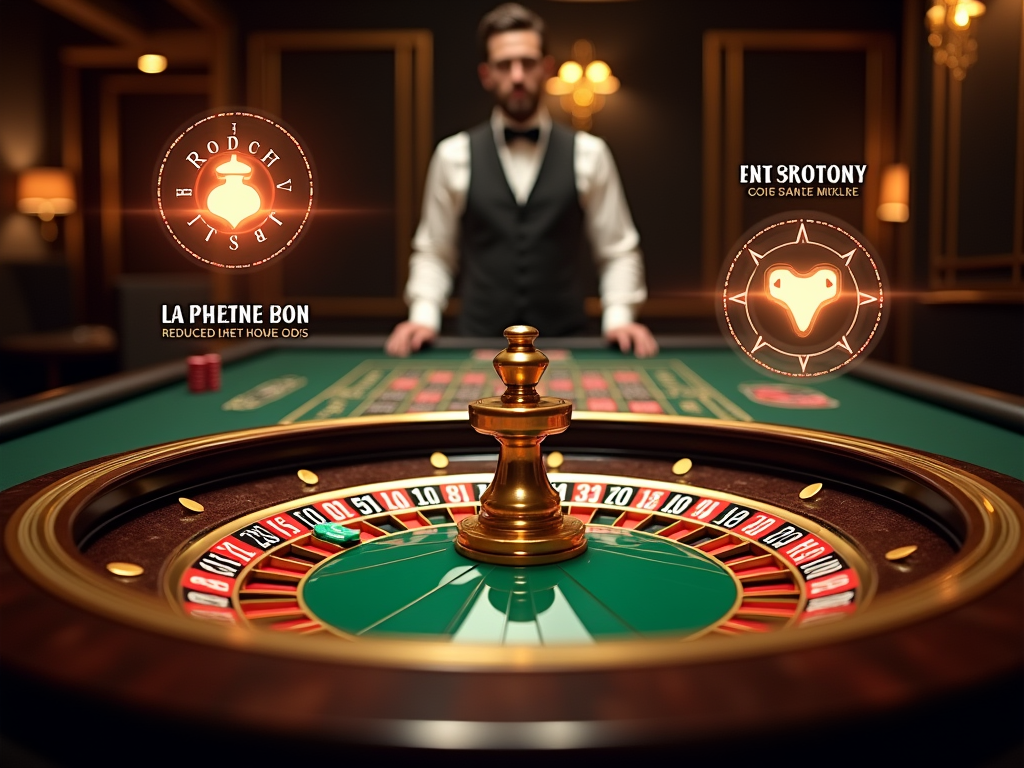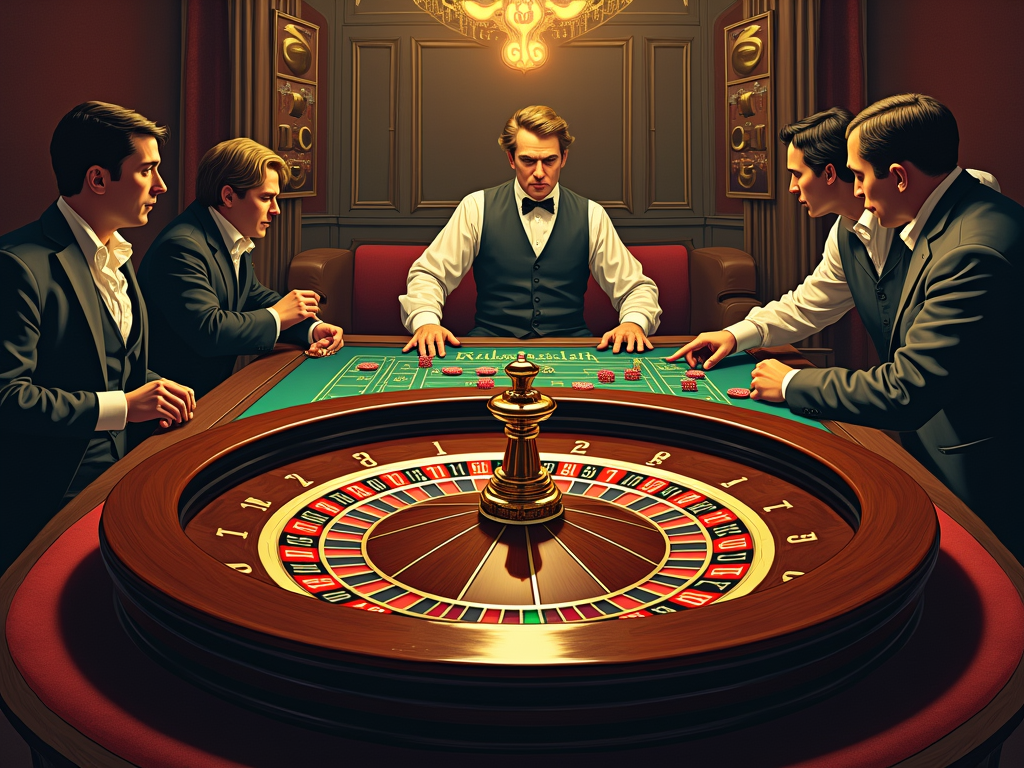The Evolution and Strategy Behind Roulette
Roulette emerged from Blaise Pascal’s failed efforts to create a perpetual motion machine. Instead, his invention became one of the most iconic games in the gambling world. The transformation accelerated with François and Louis Blanc, who introduced the single zero to the roulette wheel, creating what we now know as the European Roulette. Their innovation not only increased the game’s popularity but also turned Monte Carlo into a major gambling hub.
Key Takeaways
- European Roulette offers better odds with a 2.70% house edge compared to American Roulette’s 5.26%
- French Roulette includes special rules like La Partage and En Prison, reducing the house edge to as low as 1.35%
- Inside bets offer higher payouts but carry greater risk
- Outside bets yield smaller but more consistent wins
- No betting system can overcome the house edge as each spin is independent
- Smart bankroll management and firm betting limits are key to a sustainable playing experience
Why European Roulette is Superior
In my experience, European Roulette stands out for its simplicity and significantly better odds. The inclusion of the single zero dramatically cuts the house edge, offering players better long-term value on their bets. For those seeking an even more favorable version, French Roulette further reduces the edge with its unique rules like La Partage—halving the loss on even-money bets when zero hits.
The Role of Betting Strategies
Through analysis and practical experience, I’ve found that consistent betting strategies provide better results than chasing big rewards through risky bets. Outside bets, while less thrilling, tend to extend playing time and smooth out variance. The mathematics of roulette is clear: no system or strategy can beat the built-in house edge. Each spin is a standalone event, with no memory of previous outcomes.
Tips for Responsible Play
Success at the roulette table isn’t just about luck; it’s also about discipline and planning. I always advise setting both win and loss limits before you begin playing. This approach fosters control during both hot and cold streaks and prevents bankroll depletion.
Ultimately, enjoying roulette hinges on understanding the game’s odds and embracing strategies that prioritize fun and longevity over high-risk chasing. With smart bankroll management and a realistic mindset, roulette can offer a thrilling yet manageable gambling experience.
The Devil’s Number: How Roulette’s Origins Changed Gambling Forever
I’m fascinated by how a failed science experiment became one of gambling’s most iconic games. In the 17th century, French mathematician Blaise Pascal wasn’t trying to create a casino game — he was actually attempting to crack the code of perpetual motion. His “failed” experiment gave birth to what we now know as the roulette wheel.
From Science to Sensation
The game took a revolutionary turn when François and Louis Blanc made a bold move that shook up the gambling scene. They removed the double zero from their wheels at the Bad Homburg casino, creating what’s now known as European Roulette. This clever adjustment improved players’ odds and helped establish Monte Carlo as a premier gambling destination.
Here’s an interesting tidbit that adds to roulette’s mystique — add up all the numbers from 1 to 36 on the wheel, and you’ll get 666, the number of the beast. This mathematical quirk earned roulette its sinister nickname “The Devil’s Game”, adding another layer of intrigue to its rich history.
The evolution of roulette has branched into several exciting variations. While I find that the basic strategy in blackjack might be more complex, roulette’s path from European tables to American casinos has created distinct playing styles.
- European Roulette: Features a single zero, improving the player’s odds slightly.
- American Roulette: Includes both a zero and a double zero, increasing the house edge.
Through the centuries, the core thrill of watching that little ball dance across the wheel has remained unchanged. Whether you’re placing straight-up bets or trying your luck with betting systems similar to baccarat, roulette’s blend of chance and strategy continues to captivate players worldwide.

Why European Roulette Gives You Better Odds Than American
I can tell you straight up – European roulette offers significantly better winning chances compared to its American counterpart. The math is clear: European roulette’s single zero layout creates a house edge of 2.70%, while the American version’s additional double zero pocket pushes that edge up to 5.26%.
Breaking Down the Key Differences
The European wheel’s smart design features 37 pockets – numbers 1 through 36 plus a single zero pocket. This setup means you’ve got better odds on every bet you place. In contrast, the American wheel adds that extra double zero pocket, bringing the total to 38 pockets, which cuts into your potential returns.
Here’s what makes the European version more player-friendly:
- Single zero pocket reduces the house advantage by nearly half
- 37 total pockets versus 38 on American wheels
- Consistent number sequence that helps track betting patterns
- Clearer distinction between betting sections on the table layout
At the table, each player gets different colored chips to avoid mix-ups during fast-paced action. This system lets the croupier keep track of everyone’s wagers smoothly, similar to how blackjack dealers manage multiple players’ bets.
The table layout itself is thoughtfully arranged with distinct sections for inside and outside bets. Think of it like mastering baccarat betting patterns – once you understand the layout, placing bets becomes second nature.
The smart move is picking European roulette when you have the choice. With nearly half the house edge of American roulette, you’re giving yourself the best shot at winning. The single zero makes a huge difference in the long run, much like how proper bankroll management in blackjack can extend your playing time and improve your odds of success.
Master the Art of Inside and Outside Bets
I’ll break down the key differences between inside and outside bets to help you make smarter choices at the roulette table. When placing chips on the felt, understanding these betting options can dramatically improve your chances of walking away a winner.
Inside Bets: High Risk, High Reward
Inside bets focus on specific numbers or small number groups, offering bigger payouts but carrying more risk. Here’s what you need to know about the main types:
- Straight Up – Place your chip directly on a single number for a generous 35:1 payout
- Split – Position chips between two adjacent numbers to win 17:1
- Street – Cover three numbers in a row for an 11:1 return
- Corner – Place chips at the intersection of four numbers for 8:1 odds
- Six Line – Bet on two adjacent rows of three numbers each, paying 5:1
Outside Bets: Steady and Safer
Outside bets provide safer options with smaller but more consistent wins. These include the classic Red/Black and Odd/Even bets paying even money (1:1), plus Dozens and Columns offering 2:1 payouts. I recommend starting with outside bets if you’re new to casino table games for beginners.
A word of caution about the American Basket bet – while it might look tempting to cover numbers 0, 00, 1, 2, and 3, the 6:1 payout doesn’t justify the poor odds. I suggest sticking to standard inside or outside bets for better value.
Mixing Your Betting Strategy
For consistent results, consider mixing your betting strategy. You might place a larger stake on an outside bet while spicing things up with a smaller inside bet. This approach helps balance risk while keeping the excitement high. Just remember to manage your bankroll carefully regardless of which bets you choose.
Chip Placement Matters
Precise chip placement is critical – always position your chips clearly within the designated areas to avoid any confusion. The dealer will help ensure proper placement if you’re unsure, so don’t hesitate to ask for guidance.
French Roulette’s Special Rules That Cut the House Edge
French roulette stands out from other variants with its player-friendly rules that significantly reduce the casino’s advantage. I’ve found that understanding these special rules can make a real difference to your gaming success.
Key Rules That Boost Your Odds
La Partage is a French rule that acts as a safety net for players. When the ball lands on zero, you’ll get 50% of your even-money bets back instead of losing everything. This rule kicks in for outside bets like red/black, odd/even, and high/low.
The En Prison rule offers an interesting twist on zero outcomes. Instead of losing your even-money bet when zero hits, the wager stays ‘imprisoned’ on the table for another spin. You’ll get a second shot at winning without placing a new bet. If your bet wins on the next spin, you get your original stake back.
These player-friendly features make a big impact on the math behind the game. The house edge drops to 1.35% on even-money bets – nearly half of what you’ll face on American roulette tables. That’s why I recommend seeking out French roulette, especially if you prefer making outside bets.
Here are the key benefits these special rules provide:
- Protection against total losses when zero appears
- Extended playtime through the En Prison rule
- Lower house edge compared to other roulette versions
- Better overall winning chances on even-money wagers
Modern online casinos have embraced French roulette, making it readily available in both digital and live dealer formats. The live dealer version brings an authentic casino experience right to your screen, complete with professional croupiers who know these special rules inside and out.
While some players might gravitate to faster-paced options like mini-roulette or the excitement of multi-wheel games, French roulette’s special rules make it a smart choice for those who want better odds. Just like blackjack’s basic strategy improves winning chances, understanding and using French roulette’s unique features can enhance your gaming experience.
So next time you’re choosing a roulette table, look for these French rules – they’re your ticket to improved odds and a more strategic gaming session.

Popular Betting Systems and Why They Don’t Work
Breaking Down Common Betting Systems
I’ve seen countless players chase their losses with the Martingale system – doubling their bet after each loss, hoping to recover previous defeats. While it sounds promising, this method can quickly spiral out of control. A small $5 starting bet becomes $320 after just six consecutive losses, making it risky and unsustainable.
The Fibonacci system might seem more sophisticated since it follows the famous numerical sequence, but it’s equally flawed. Adding your previous two bets together to determine your next wager creates an illusion of control in a game where each spin is independent.
Here are the key reasons why these systems fail:
- Table limits prevent unlimited progression in betting systems
- Each spin is completely independent of previous results
- No betting pattern can overcome the built-in house advantage
- Progressive systems can deplete your bankroll rapidly
The D’Alembert system takes a gentler approach with incremental increases after losses and decreases after wins. Yet like effective bankroll management strategies, it still can’t beat the mathematics of the game.
Even James Bond’s strategy – covering multiple numbers to spread risk – can’t escape the casino’s edge. While it provides more winning spins, the payouts remain proportionally lower to maintain the house advantage.
Online roulette adds another layer with RNG technology ensuring complete randomness. This makes pattern-based betting systems even less effective than in traditional casinos. If you’re interested in games with better odds, consider trying your hand at blackjack where skill can impact results.
The hard truth is that no betting system can transform roulette into a winning proposition long-term. Instead of chasing losses or following complex betting patterns, I recommend setting strict loss limits and playing for entertainment value. A simple strategy of consistent bet sizes on your favorite numbers or colors will serve you just as well as any progressive system.
Remember, these betting systems might seem logical, but they’re based on the gambler’s fallacy – the incorrect belief that past results influence future outcomes. The ball has no memory, and each spin stands alone as an independent event.
Smart Roulette: Setting Limits and Managing Risk
Practical Bankroll Control for Roulette Success
Smart bankroll management starts with dividing your funds into smaller betting units before hitting the roulette table. I recommend setting aside 2-5% of your total bankroll for each betting session, similar to how successful blackjack players manage their bankroll effectively.
Time limits are just as important as money limits. I suggest setting a firm session duration—whether it’s 30 minutes or 2 hours—and sticking to it regardless of whether you’re winning or losing. This helps prevent the common mistake of chasing losses or getting caught up in winning streaks.
The roulette house edge can’t be beaten in the long run, much like how baccarat’s house edge influences game outcomes. Understanding this fact helps maintain realistic expectations and promotes responsible gambling habits.
Key Strategies for Responsible Roulette Play
- Set a clear win limit and stop playing once reached
- Establish a maximum loss limit before starting
- Never borrow money or use credit for gambling
- Track your time spent playing
- Keep a record of wins and losses
- Take regular breaks between sessions
A healthy approach to roulette means treating it as entertainment rather than a money-making venture. If gambling starts affecting your daily life, relationships, or financial stability, it’s crucial to step back and seek support.
I’ve found that players who stick to these guidelines tend to have more enjoyable experiences and maintain better control over their gambling activities. Remember, the excitement of roulette comes from the thrill of the spin, not from risking more than you can afford to lose.
By implementing these strategies and maintaining a disciplined approach, you’ll be better positioned to enjoy roulette while keeping risks in check. This balanced approach helps create an entertaining gaming experience without compromising your financial well-being.
Sources:
Scarne, John. “Scarne’s New Complete Guide to Gambling.”
Thorpe, Edward O. “The Mathematics of Gambling.”
Encyclopedia Britannica. Article: “Roulette.”





